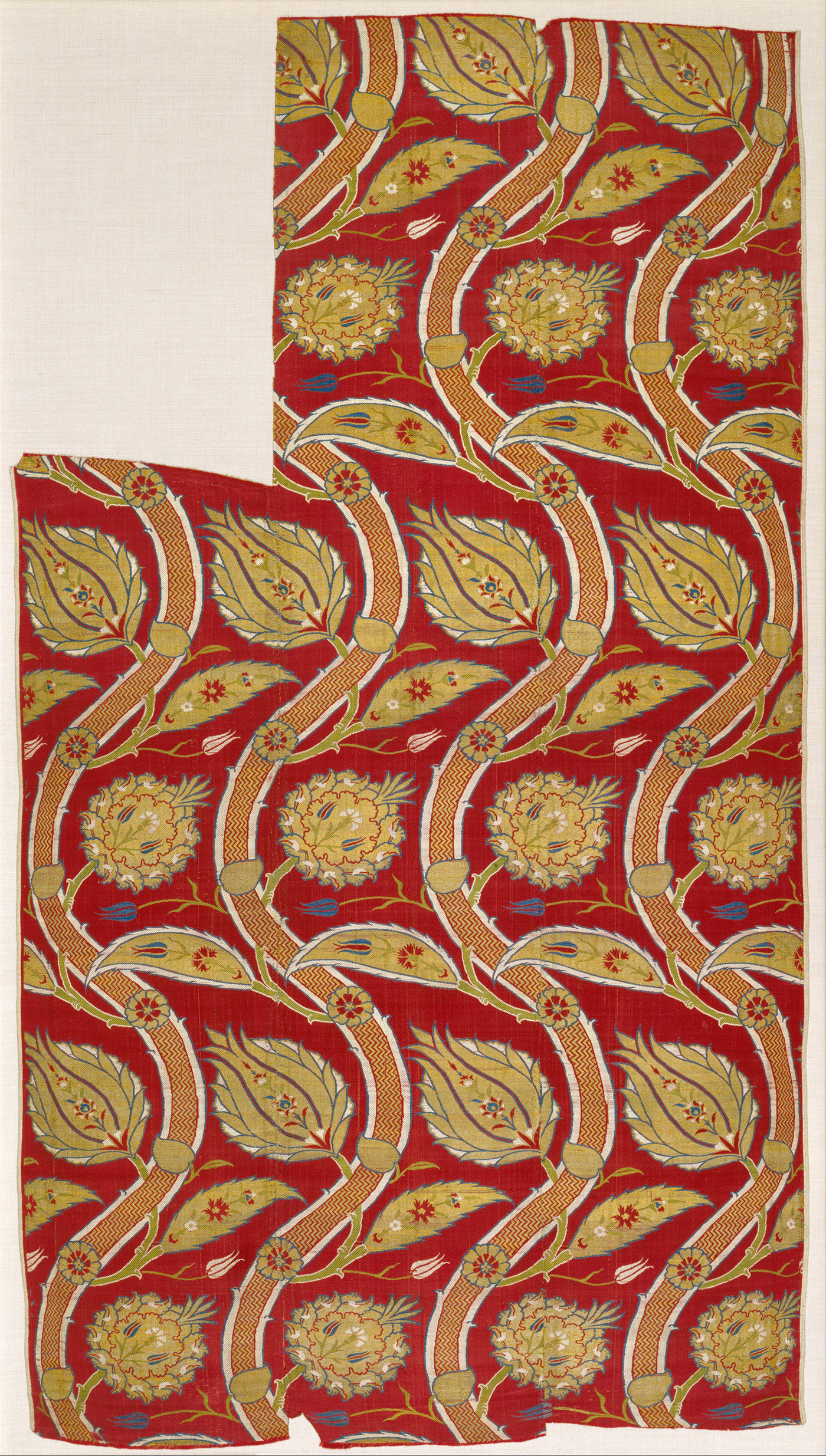|
Fragmentary Loom Width with Wavy-vine Pattern
Object Name: Fragment
Date: ca. 1565–80
Geography: Turkey, probably Istanbul
Culture:
Islamic
Medium: Silk, metal wrapped thread; lampas (kemha)
Dimensions: Textile: L. 48 in. (121.9 cm) W. 26 1/2 in. (67.3 cm) Mount:
L. 53 1/4 in. (135.3 cm) W. 32 in. (81.3 cm) D. 1 in. (2.5 cm)
Classification: Textiles
Credit Line: Purchase, Joseph Pulitzer
Bequest, 1952
Accession Number: 52.20.21
The Metropolitan Museum of
Art, New York
Spectacular, large‑pattern silks were favored materials for luxury
garments among the courtly elite of sixteenth-century Istanbul, and were
often used for the bold, richly colored caftans of the Ottoman sultans.
The weave here, referred to in Turkish as kemha, incorporates
metal‑wrapped thread into a lampas, or multiweave fabric. Ottoman kemha
fabrics typically combine a satin ground with a design executed in twill
and highlighted with gold. Catching the light, their glittering patterns
appear to float above a shimmering background. |

